Beyond first, business & economy: the 11 classes of airline travel
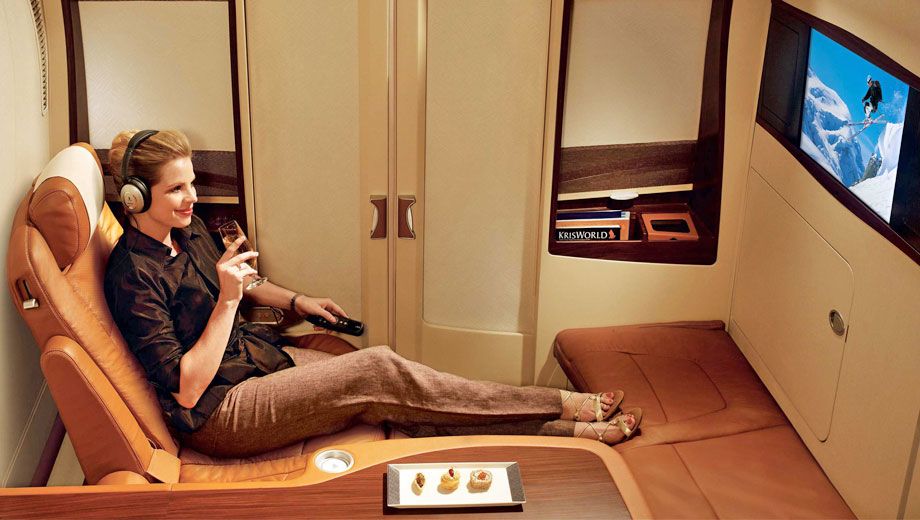
In the ever-evolving world of business travel, airlines are continually offering new styles of seating to try to woo your dollars and your loyalty.
But this is not restricted to just the pointy end of the plane. Competition has spawned variations which ripple down the rest of the cabin, creating a seat and service to suit almost every traveller.
We've counted an astounding eleven different offerings among the world's airlines. Here's the lowdown.
Standard Economy
Let's start with economy. Think every economy seat is the same? It's not. You'll find variations of up to eight inches in legroom and two inches in width across various airlines flying to and from Australia, just in regular economy class.
(Check out our guide to how legroom and the airline technical term "seat pitch" work if you need a refresher.)
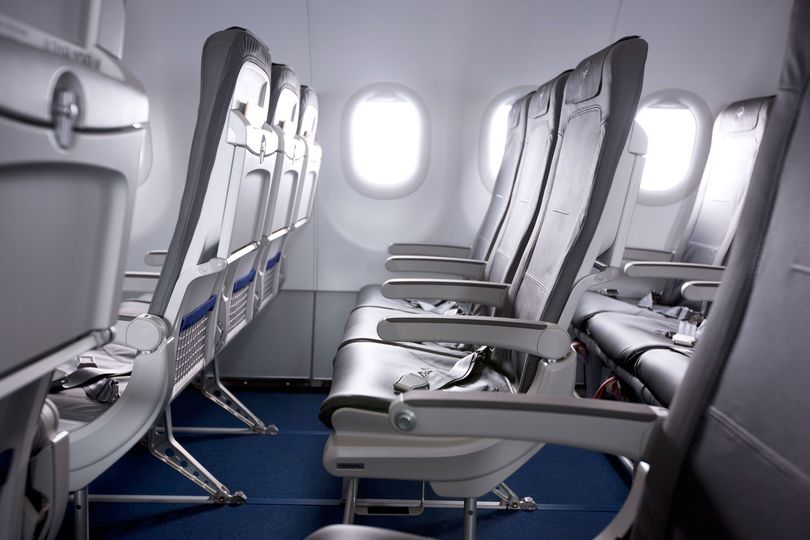
And there are other things to consider as well when choosing a flight in economy:
- What's the in-flight entertainment like? United's trans-Pacific economy only has overhead monitors on a loop, rather than touchscreen on-demand entertainment.
- Do the seats recline? Cathay Pacific's unpopular previous economy class seats don't; they slide forwards instead.
- How much legroom is there? From Australia, the most generous airlines are Korean Air and Malaysia Airlines, with 34 inches in most seats, while low-cost carriers can squeeze you down to 28 inches.
- Is there at-seat power? Being able to keep your devices charged while you use them to divert your attention from the tedium of a long economy flight is a real bonus.
Economy plus
Moving up from economy, the first upgrade you find is the "extra legroom in economy" style of seating -- not the bulkhead or exit row seats, but just a separate section of the regular economy cabin with a few extra inches of space between each row.
It's the same seats and service as everybody else in economy, you just get more legroom.
Popularised by United Airlines with its Economy Plus offering, this is often given out for free to high-status frequent flyers. It's sometimes available for purchase when you book, or if you sweet-talk an airline staffer at the airport.
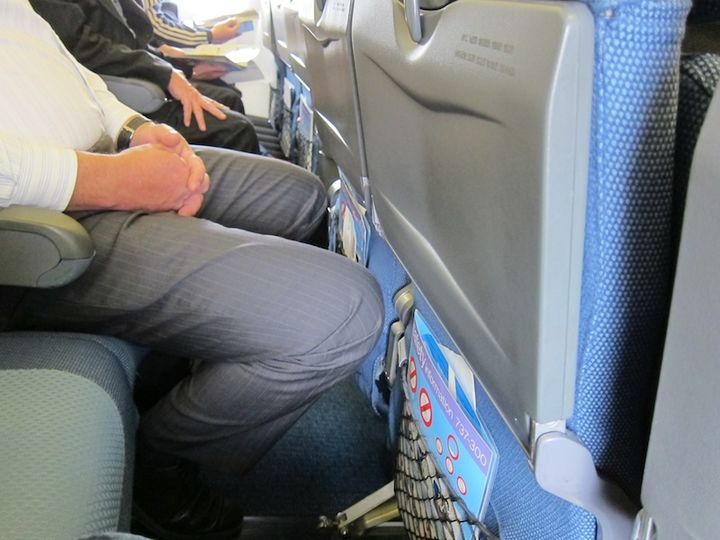
It appears on Australian flights with United (Economy Plus), Delta (Economy Comfort) and Air New Zealand (Space+).
Economy minus
Some airlines go the other way, though, packing an extra seat into every row in what we call "economy minus". And it's not just on the super-cheap low-cost carriers like AirAsia X.
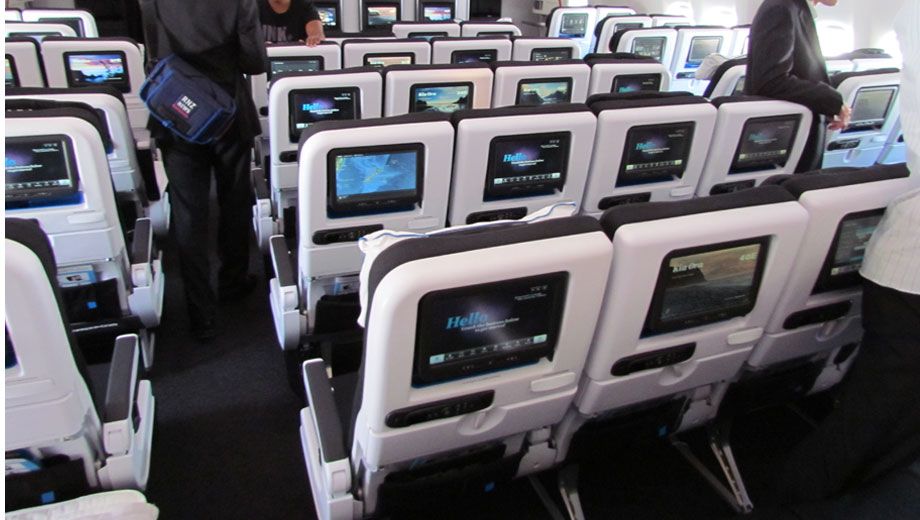
Reputable airlines like Air New Zealand, Emirates, KLM and Air France also squeeze in a fourth seat in the middle of their Boeing 777 planes. They charge the same as a regular economy seat for one that's narrower than other airlines, making those flights ones to avoid in economy on the long haul.
Premium Economy
When you move up to premium economy you get better seats and service, usually including a better-than-economy menu for food and drink.
Seats, service, food and drink vary markedly between airlines. Usually you'll gain five to seven inches of legroom and two or three inches of seat width.
Virgin Atlantic claims to have invented it in 1992, then called "Mid Class" and sitting between the airline's Upper Class business offering and economy. (Richard Branson suggested calling economy "Riff Raff" to match.)
British Airways' World Traveller Plus, for example, is at the lower end of the scale: a slightly better seat and a business class main course but not much else.
Qantas' and Virgin Australia's premium economy offerings are praiseworthy when compared internationally, and Cathay Pacific is the latest to join the premium economy club, with a new seat due to debut soon.
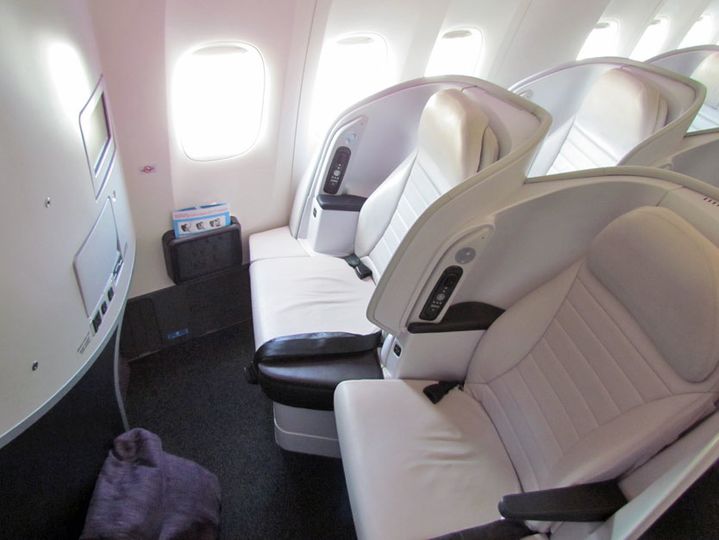
Near the top of the list is Air New Zealand's Spaceseat, which is revolutionary in style -- and comfortable now that the airline has added six inches extra legroom for each seat.
"Premium" class
An increasing number of low-cost airlines are offering remarkably good seats in the pointy end of their jam-packed international flights, which isn't quite premium economy but isn't quite business class either.
You won't receive gourmet meals or free-flowing champagne, but if your focus is on a good night's sleep and the chance to get some work done, it may be worth the tradeoff.
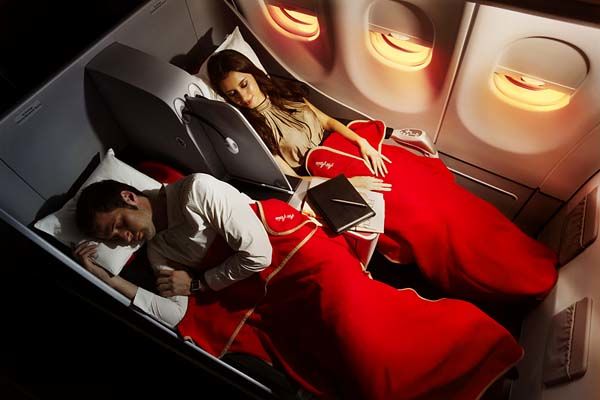
Singapore Airlines' offshoot Scoot -- which will start flights to Sydney and the Gold Coast in June -- has a less exciting premium section that's much more like the premium economy offering on other airlines.
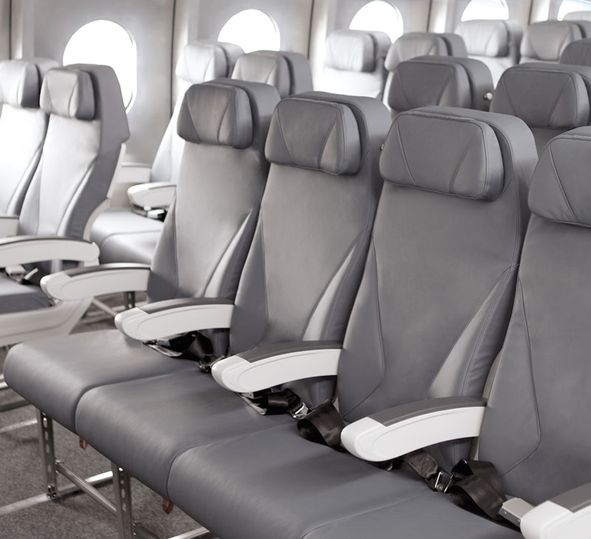
Since the whole idea of a low-cost long-haul airline is fairly new, expect more developments and a fair bit of inconsistency as low-cost airlines figure out "Premium" class.
Business class
British Airways reputedly invented the cabin between economy and first in the late 1970s, with the name "Club Class" continuing on to today's Club World long-distance and Club Europe short-range business class offerings, but the name "Business Class" actually originated with Qantas in 1979.
We've delved more deeply into the various types of seat available -- recliner, lie-flat seat, and the various types of fully flat bed -- previously, but here they are in a nutshell.
Domestic business class
Domestic business class within Australia involves a larger recliner seat, better food and various other amenities like priority boarding, lounge access and more luggage.
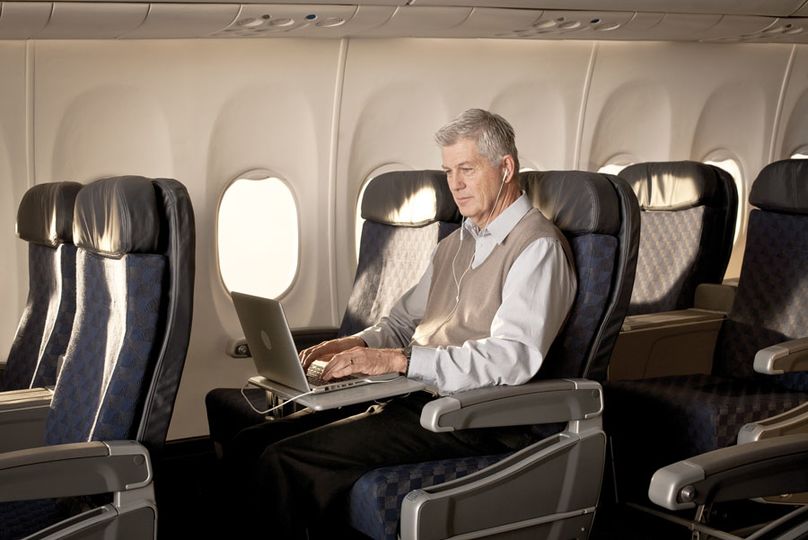
Overseas, this is called "first class" in the USA and some other countries.
Eurobusiness
Almost every European airline skips larger recliners in favour of economy seats with slightly more legroom and a blocked-off middle seat. Frequent flyers often refer to this as the "Eurobusiness" style.
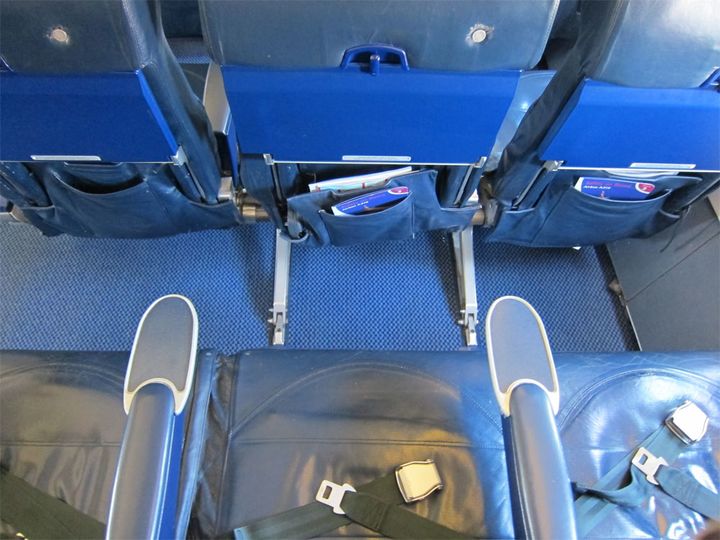
If that sounds familiar to Australian travellers, it is -- Qantas used to offer what it called "convertible seating" on some routes, and Virgin Australia's old Virgin Blue Premium Economy was a similar layout: a few extra inches of legroom and nobody immediately next to you.
Regional business class
Around the Asia-Pacific region, we're noticing an increasing number of airlines foregoing their full business-class offering for shorter routes, or where there isn't an international-standard business class competition.
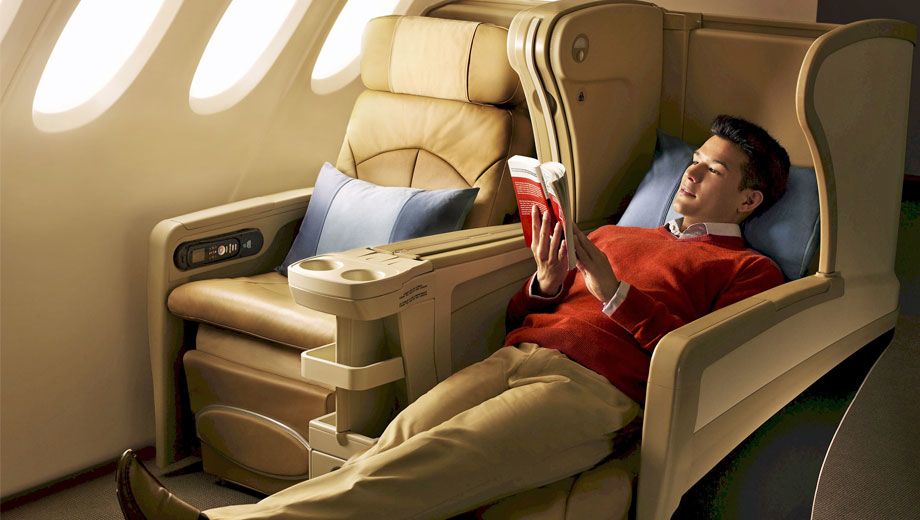
Unfortunately, Australia-Asia flights often see this less comfortable sort of offering. We explained how Singapore Airlines' Melbourne flights this autumn use three different planes with three different business classes, for example.
International business class
Much more comfortable than even the first class seats of twenty years ago, the gold standard of international business is the fully flat bed.
There are numerous different takes on international business class, but the idea stands: if you're not properly horizontal, you're not maximising the amount of sleep you can squeeze out of your business class ticket.
All-business class flights
Frequent flyers also value all-business class flights -- whether that's the numerous trans-Atlantic options on small planes like British Airways' London City-New York JFK flight, a full A330 (with two types of business class on board) between Hong Kong and London Gatwick on Hong Kong Airlines, or the all-biz upper deck of Singapore Airlines' newest Airbus A380s.
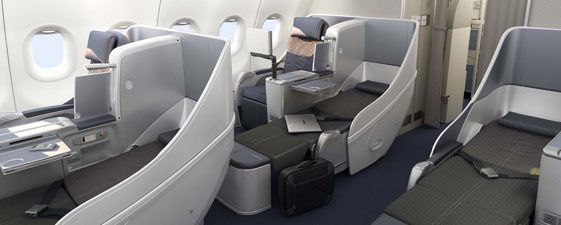
While there's an undeniable "no riff-raff" snob factor here, a business-only cabin has real benefits: it's quieter in-flight, with a faster run through boarding, getting off the plane, immigration, baggage and customs.
First class
Now we're on to the privileged pointy end of the plane -- literally, in the case of the Boeing 747, where first class is usually found in the nose.
There are few better "ahhhh" moments in flying than when settling into a first class seat in the ultra-quiet nose of a jumbo jet with a dewy glass of champagne and the promise of great food, great service and a great night's sleep.
Some airlines, knowing all too well that they've invested a fair amount of money making today's business class better than the first class of ten years ago, have cut first class from some or all routes.
Qantas and Air New Zealand are good examples of this trend, with the red roo chopping first class from the remaining A380s it has on order with Airbus, and Air NZ's Business Premier as the kiwi carrier's best seats.
Newer airlines like Virgin Australia have never had a first class, with business the top offering on board from the get-go.
But others like Lufthansa and British Airways are investing more in new first class seats and upgrades to existing seats. So keep saving those frequent flyer miles if the pointy end is calling to you...
Suites: "beyond first"
With the debut of the Airbus A380, airlines started a new race to the top with sumptuous private suites: your own little cabin in the sky.
Emirates' first class suite, practically dripping with gold-effect brass and faux wood, never fails to inspire debate among the frequent flyer: gorgeous or gaudy?
But with ultra-wide entertainment systems, hot and cold running everything and even your own minibar, it's undeniably luxurious.
Other airlines promise the ultimate in airborne luxury and privacy, with Singapore Airlines and Etihad also offering suites to their spendiest customers.
And if your appetite has been whetted by what's on offer today, just take a look into the future to see what the next generation of seats, beds and innovations look like.
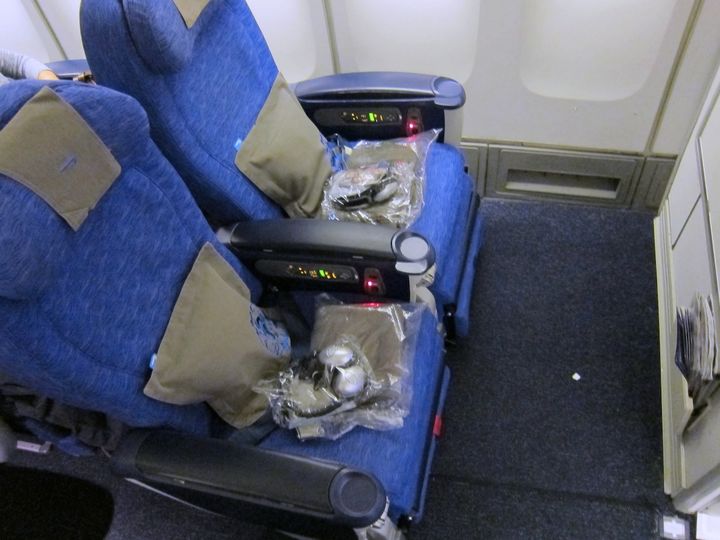
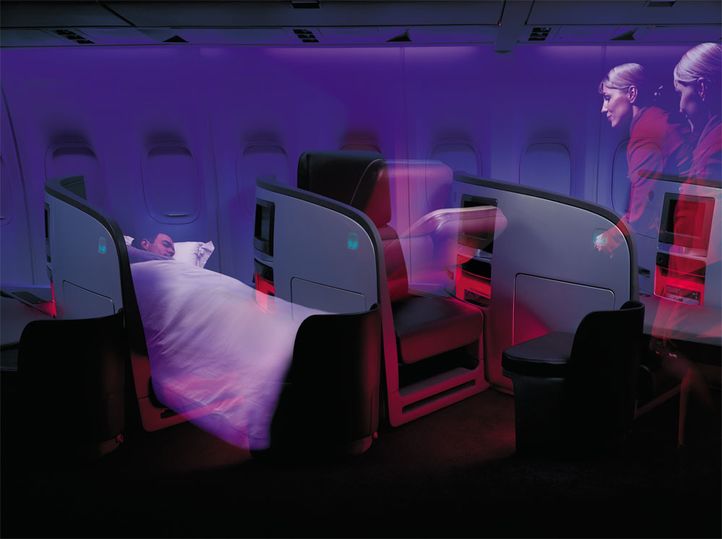
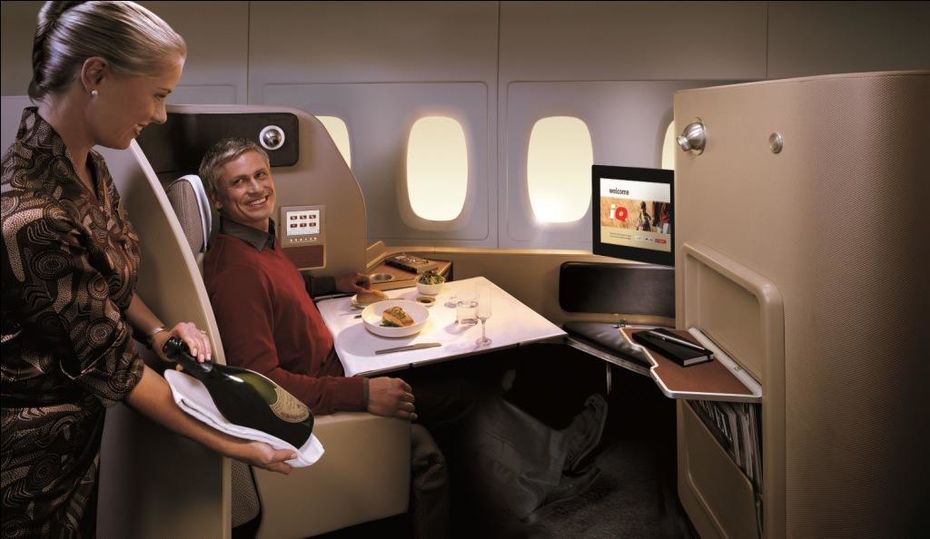
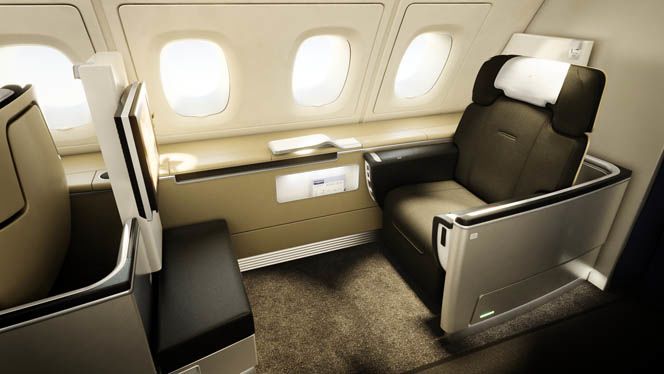
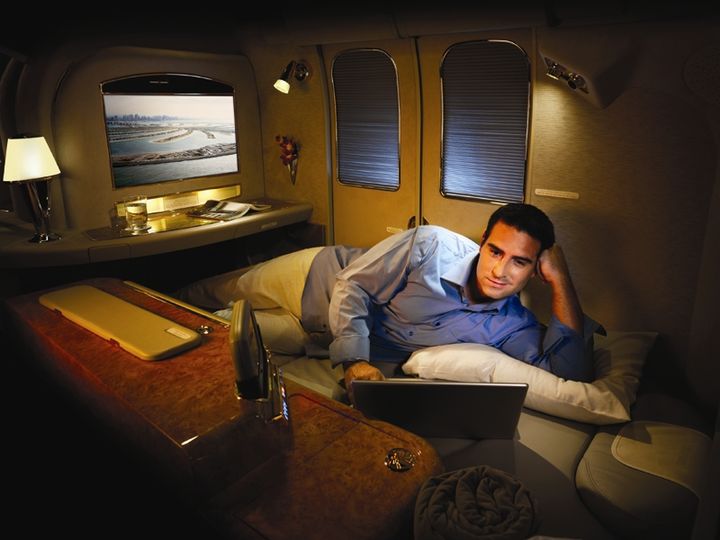
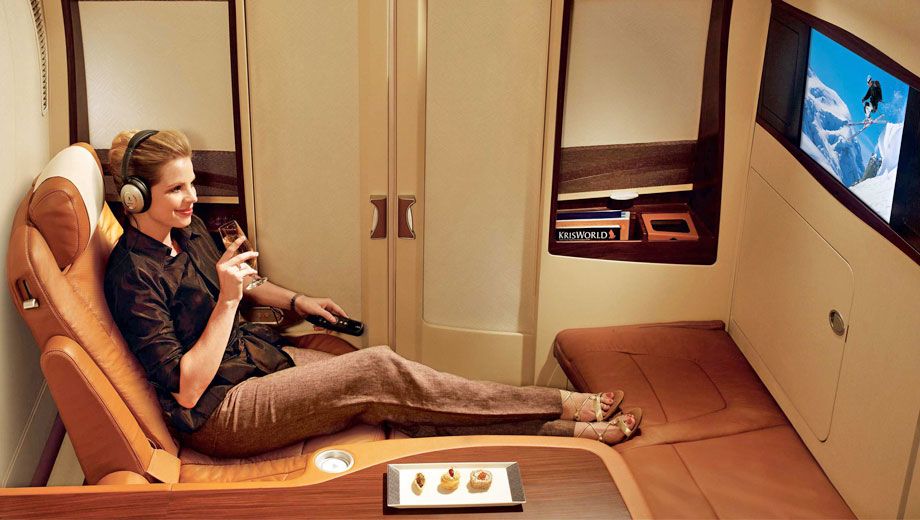
Qantas - Qantas Frequent Flyer
28 Sep 2011
Total posts 321
Excellent article John, well done. Just a couple of footnotes. SAA uses the Eurobusiness model for domestic and regional flights, as does BA South Africa, on B737 and A320 services. Air NZ offers similar as an economy product, "Works Deluxe".
03 Jan 2011
Total posts 665
Yes indeed to all of those, and of course there are all kinds of footnotes that I'd put in if keeping the article to a reasonable length wasn't a factor!
26 Aug 2011
Total posts 20
I think the economy minus mention is a bit rich. NZ on their 777-300 have a 17.1" seat width and EK have 17" on ther compared to 17.2" on Qantas 747 and the usual 17.5" on A330/A340s. I think the NZ Skycouch deserve more of a mention than "economy minus", the skycouch is a pretty revolutionary product and econoy minus is a fictious way of saying that airlines/aircraft have varying degrees of seat width.
03 Jan 2011
Total posts 665
Mark, have you been on the NZ 777? It's not just about the specific width of the seat pan -- it's narrower armrests, aisles you can't get a rollaboard down and less elbowroom in the window seats.
I did consider including the Skycouch, actually, but decided not to for reasons of space and the fact that it's just one airline doing it. It's a pretty interesting product though, as our 777 insider guide showed.
18 Nov 2011
Total posts 33
John, you have forgotten one thing that Singapore Airlines offers all business class seats on its A 340-500 serving nonstops flights both from Singapore to LAX and Newark. These have been a generous 1-2-1 configuration and with only 100 paxs, the most comfort and private for tranpacific flights today.
03 Jan 2011
Total posts 665
There are several all-business class examples that I didn't quote in the article, including SQ's A340-500, Privatair (for Lufthansa and KLM), Openskies and ANA's Mumbai flights. It's great that there are so many to choose from! (And to be pedantic, EWR-SIN is not a trans-Pac -- it's trans-Arctic if anything!)
04 Nov 2010
Total posts 670
Great wrap up, I can cross only a few of those off my list: economy, premium economy, business. Never had first or a suite, happily never had 'economy minus' either!
03 Jan 2011
Total posts 665
Economy minus is a real drag, and it's frustrating that airlines get away with it so much. Fingers crossed that the upgrade gods smile upon your next flight...
20 Jul 2011
Total posts 72
Having flown in a suite once (thanks for the upgrade, Etihad!), I'm always impressed how they manage to photograph them so they look like bedrooms when actually, they're not much different to something like the Qantas A380 first product, just with higher walls...
Hi Guest, join in the discussion on Beyond first, business & economy: the 11 classes of airline travel